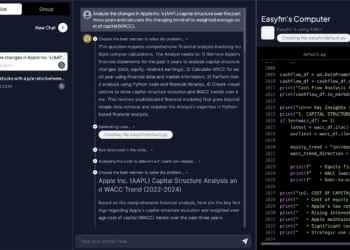Everyone is on the internet- online in the current digital age, individual, startup, or an enterprise. People’s dependence on the web and mobile applications has pulled companies and business owners to invest in the evolving technology and create their own web application to get head-on in the tech-competition.
However, no matter what, a web application development firm must make all amends to create an intuitive and user-friendly app so that everyone just falls in love with it the right way. Trust us; it is super important to stand out to stand in the app market’s cutthroat competition.
Nevertheless, fabricating an application that rocks in all aspects is quite a task. Thus it is essential for the developer of the company you hire to know all the rules and techniques it takes to touch the milestone.
Working as a tech firm for almost a decade, we have come to realize the four rules that, if executed properly, can guarantee success in a “less tougher” way.
These rules apply to any project, globally for any company- enterprise or startup.
If you are determined to rule the market, continue reading forward:
The 4 “musts” of web app development:
You can, if you plan:
Before hopping on to coding, give a brief moment to plan everything out. You must plan out your project well in advance to avoid any deviations later. Design a well-thought map of your web app development, consider your target audience and their likes and dislikes.
Once done, move forward to other needs such as UX, design, coding, APIs, etc.
Go chronologically, and by the end, you should have devised a well-thought plan with every need considered and every potential feature mentioned.
Some rules you must consider while planning to develop your web application are:
- How well does your audience understand and adapt to technology?
- How much time are your users willing to invest in your web app?
- What environment will the users utilize your web app in?
- What patterns should you integrate?
While you develop your web application, try not to reinvent the patterns. We are saying this because the new and new operating systems for mobiles utilize icons to allow users into the app. These elements can’t be interchanged with other UI elements since users will have to learn new patterns if they wish to change devices. This will just build up a lot of confusion and a head-hurting process, thus making your users unhappy.
Choose your APIs:
Most web app development services pay extra attention to choosing the right Application Programming Interfaces (APIs) since they are among the most critical aspects of developing a web app. These APIs allow developers to create smart applications via manipulation of data from various web apps.
Therefore, considerable thought must be given before selecting one API for your website because a developer/firm can use Facebook’s API for quite a long time. And if one update or change is introduced to the existing API, your website’s whole dynamic can get affected.
Since APIs are becoming super popular in the developer’s community, more and more startups and enterprises are using APIs to develop their applications’ front-end. And at the end, these APIs facilitate a wholesome experience for the end-users since the web app’s flexibility is increased in terms of user experience and interface.
Overall, with APIs, there is nothing to lose for developers as well as the end-users.
Go with the widely accepted technologies:
Trying on new things is considered “cool” by many developers. However, when one decides to put their hands on trying new frameworks, libraries, languages, tools, etc., it can pose a problem when carrying the same to your business.
When you develop a new web application for your business, you are just stepping on a risky stone when implementing a newly released language. I mean, what if the language never really makes it in the market?
In that case, you will be stuck with a non-functioning language-based web application.
Nevertheless, you can still experiment with new technologies. Yet, when it comes to basing your business web application, it is smarter to opt for an already established language such as Laravel, AngularJS, Django, WordPress, Ruby on Rails, etc.
This will provide better stability to your project.
Test out your ideas:
You must be thinking that this is obvious. But this one tops our list of rules.
You must understand each user is different. Therefore, you must integrate features into your application based on your specific user’s likes and dislikes.
You can make that happen via online surveys, testing for usability standards, A/B testing, integrating APIs, testing out the UX, and checking other relevant aspects.
You can also use web app tools such as- Testpad, Testlink, Zephyr, TestComplete, Selenium, and PractiTest, to test out your ideas.
Conclusion:
We have been working as a web application development firm for more than a decade now. This write-up is an outcome of years of experience, failures, and success. Only four steps can quickly get you to your desired destination. All you have to do is pay significant attention to each stage, have an eye for detail, be open to new things, and implement everything correctly.
If you manage to execute all the four steps correctly, you’ll get many steps closer to where you wish to be- on the top!






